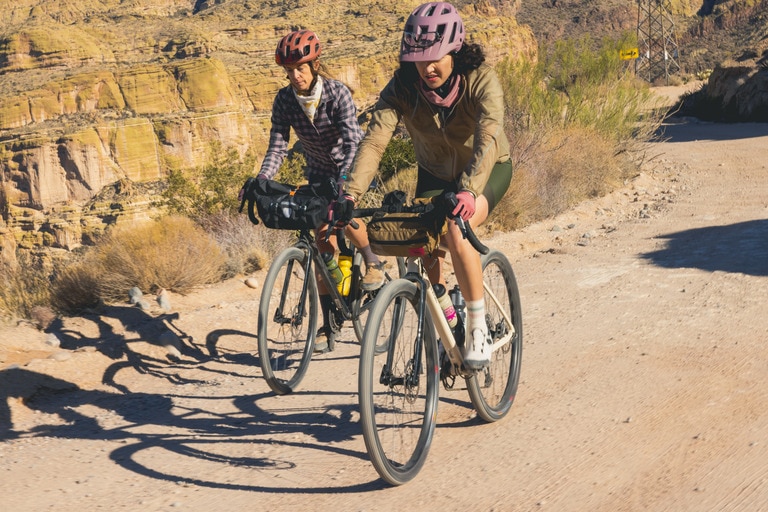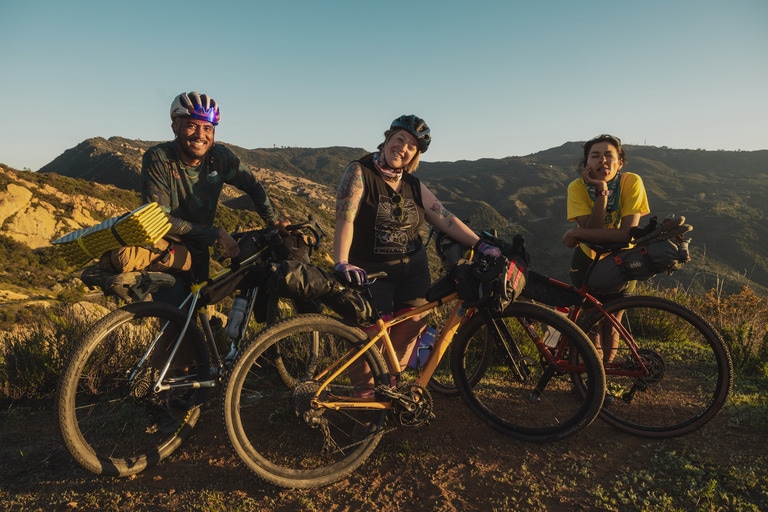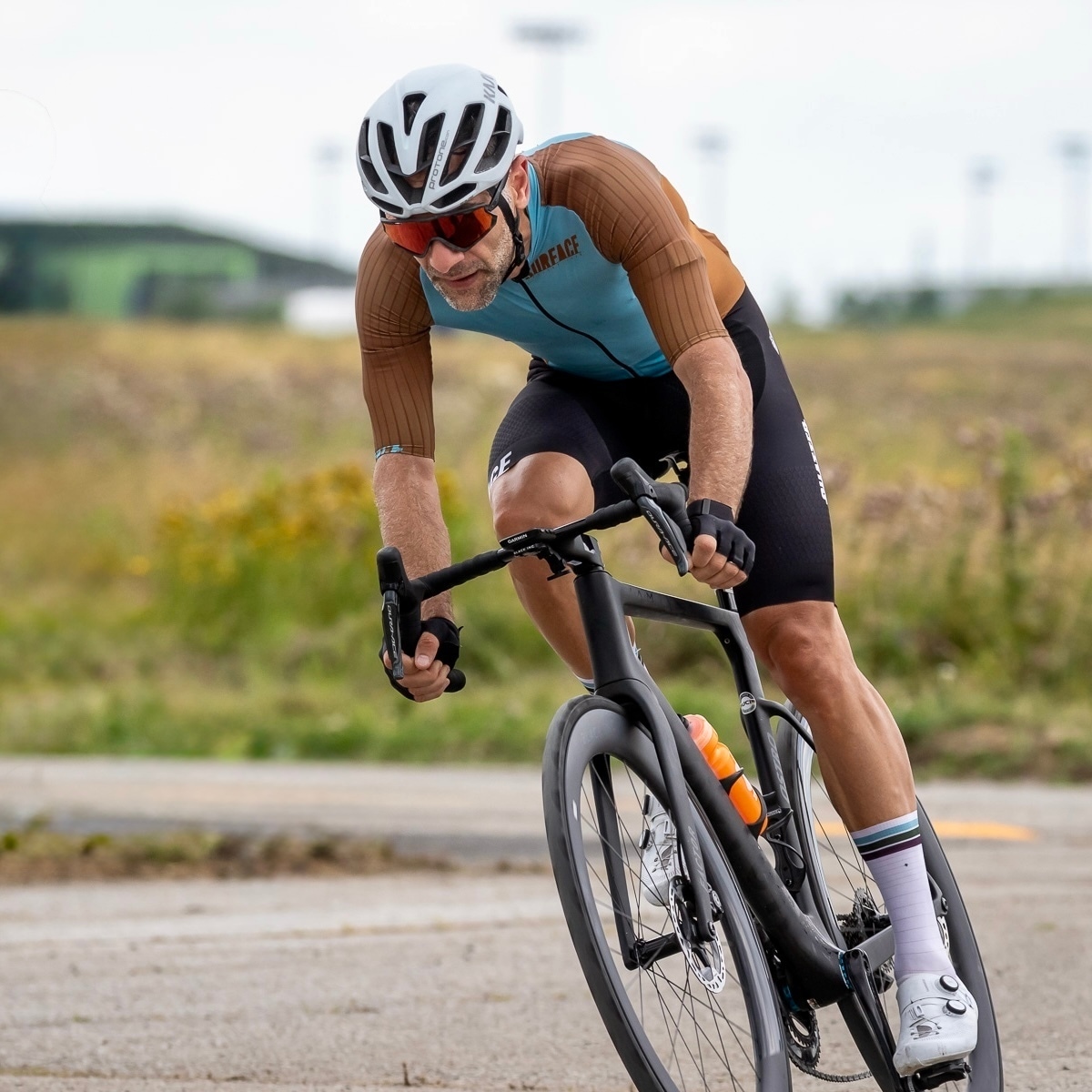Cycling great Eddy Merckx once said, “Ride as much or as little, or as long or as short and you feel. But ride.”
We agree. As the five-time Tour de France winner no doubt knows, riding a bike can be an intense workout up steep hills and down screaming descents, but it can also be a casual pedal around the neighborhood. You might cycle outside on the trail or inside on a stationary setup. Some riders will track their stats using all the latest tech like a power meter, heart rate monitor or data collection app like Strava. Others will enjoy the simple meditation of moving their legs through each revolution without posting the results online.
The wonderful news is that however, wherever and whenever you hop in the saddle, your body and your mind reap considerable benefits.
To better understand what those advantages are, we talked to experts, including coach Neal Henderson, who earned the United States Olympic Committee Doc Counsilman Science Award for practical applications of sport science in coaching cyclists; Marley Blonsky, executive director of inclusive cycling nonprofit and REI partner organization All Bodies on Bikes; Cassie Abel, founder and CEO of women’s performance cycling apparel brand Wild Rye; and Nick Kalkounis, director of product management training and competition with indoor cycling app Zwift. Here, they explain the range of physical and mental benefits gained from the most popular forms of riding.
Read on for the full article or click on the links below:
Tip: Need a refresher on biking skills (or learning to ride for the first time)? Read Bicycling for Beginners and Tips for Cycling on a New Bike for great advice on how to safely and efficiently get back in the saddle.
Physical Benefits of Cycling
Cycling is low-impact exercise. Cycling provides the benefits of cardiovascular endurance without the impact found with some other forms of physical activity, like running or jumping, says coach Henderson. This makes bike riding a great form of exercise on its own, as well as a good cross-training option to reduce the likelihood of overuse injuries for people who primarily run, ski or do other forms of high-impact exercise. “You can do more cardiovascular activity by adding in cycling,” Henderson says, “and build that fitness and endurance for whatever other sport you do.”
Cycling's low-impact nature also makes it one of the first forms of exercise that physical therapists introduce to patients recovering from surgeries and injuries. Since there’s less stress on the joints, it’s an especially effective exercise for individuals with a limited range of motion or reduced mobility in their hips and knees.
The caveat, however, is that our bodies do require some weight-bearing activities like running or strength training to maintain overall bone health. Refer to Strength and Mobility Training for Runners or one of our other running and strength training articles for more tips on how to keep bones and muscles strong.
Cycling improves your legs' muscular endurance. Pedaling predominantly engages the calves, quadriceps, hamstrings and glutes, though there's some stability required from our core and lower back muscles as well as the upper body to maintain good posture while riding. For more significant strength gains, add dedicated resistance training—like lifting or bodyweight exercise—to your routine.
Read more: Resistance Band Workouts
Cycling is for everyone. “Biking is an incredible way for people of all sizes, shapes, ages and fitness levels to move their bodies,” says Blonsky from All Bodies on Bikes. Cycling involves a repetitive motion that’s relatively easy to learn and, as mentioned, the fact that it’s non-load bearing makes it a great option for those recovering from an injury or just beginning their exercise journey.
There are also many ways to cycle, including riding outside and inside, covering different types of terrain, and pedaling with both of your legs or with your hands. Almost everybody can participate in this type of exercise.
Read more: How to Train for Cycling
Mental Health Benefits of Cycling
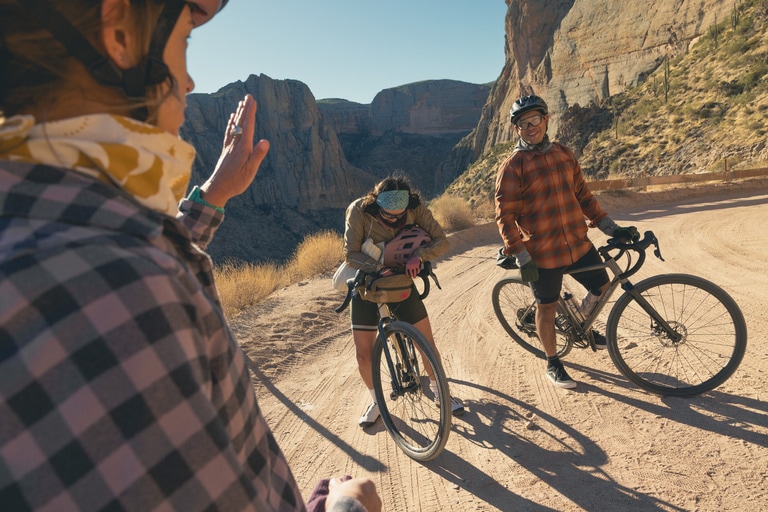
Exercise in general is good for our brains. Countless scientific studies have proven the emotional benefits of moving our bodies. Research shows that activities like cycling improve mood through their ability to heighten self-esteem and cognitive function. It may even help to reduce depression and anxiety. “As humans, we are meant to move,” Henderson says. “If we’re not doing physical activity, our minds are not in the right place.”
Biking is a great way to build connections. From riding with a peloton of bikers in a road race to pedaling alongside your third grader to gathering with people from around the globe on a group ride, there are myriad ways to deepen relationships and find community through cycling. “Biking can connect you to community and reduce loneliness,” Blonsky says. Want to see the world through a new lens? “Broaden your perspective on lots of things by experiencing the world on a bike.”
Look for cycling meetup groups, bike maintenance workshops and events held in your community, including at your local REI. Biking with others can change your life, attests Wild Rye founder Abel. “When I moved to Sun Valley, Idaho, I was welcomed into a laid-back, fun mountain biking community,” she says. “That’s when I really fell in love with it. Mountain biking became a way to form lasting friendships while connecting with the stunning beauty around me.”
Biking is fun. Research demonstrates the joy of cycling, but it’s something we know inherently too. Remember that big grin and feeling of freedom you experienced as a kid pedaling away from home for the first time? Turns out, we can find that same glee and sense of independence as adults too. “At its core, biking is my playtime,” Abel says, “and having the chance to share that with friends as an adult feels truly special.”
Practical Benefits of Cycling
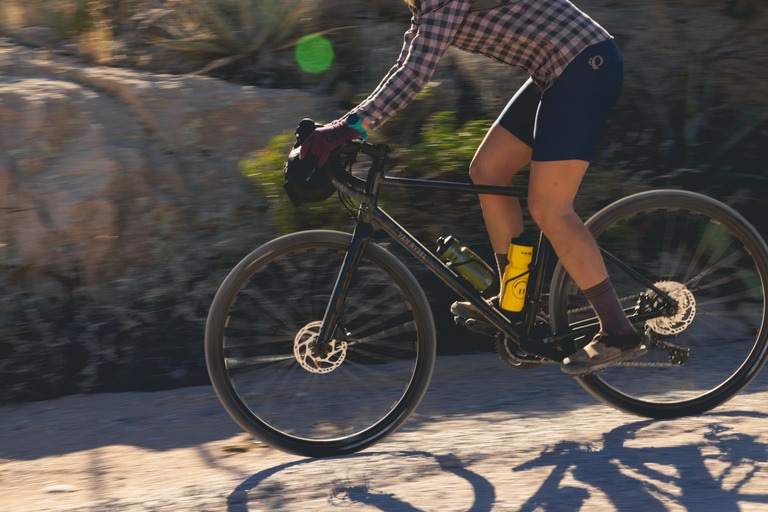
Bikes can cover considerable ground relatively quickly. According to fitness data collection app Strava, the average cyclist covers 12.1 miles per hour. Comparatively, people typically walk at about 3 miles per hour, while hikers can go even slower as they tackle ascents and technical terrain. Thus, using two wheels instead of two feet provides a chance to travel farther and likely take in more scenery if you’re out on a recreational ride. For commuters, especially those who drive shorter distances and/or contend with heavy traffic, cycling may even be faster than taking a car. Plus, you won’t have to circle the lot looking for an open parking space when you arrive.
Cycling is cheaper than driving. Buying a bike, even an e-bike, is generally less expensive than purchasing a vehicle. In the same vein, bike maintenance will average out to be less than vehicle maintenance. And no matter what the price is at the gas pump, self-powering your bike is the thriftier option.
Biking instead of driving reduces your carbon footprint. Carbon emissions are a significant contributor to global warming. The U.S. Environmental Protection Agency estimates that the average passenger vehicle emits roughly 4.6 metric tons of carbon dioxid per year. While riding your bike isn’t technically emissions free—we do need to eat to have the energy to power our two-wheeler—it’s pretty darn close.
Specific Benefits of Cycling Outside
Nature is scientifically proven to heal. It reduces anxiety, promotes creativity and contributes to heart health, with just 120 minutes of exposure per week. So, after you check the weather, dress appropriately and make sure you have the essentials on hand (especially water, food, a bike pump and a tube), pedal toward the path, park or trail and start reaping the dual benefits of moving your body and experiencing the outdoors.
Read more: Bike Gear Essentials | What Clothes to Wear When You’re Cycling | Best Bike Accessories | The Best Gifts for Cyclists
Road Biking Benefits

What is road biking? Road biking is pretty much what it sounds like: cycling on asphalt. Usually, bikers will share the road with cars or ride in designated bike lanes. The activity can vary in purpose, from bike touring with the family to urban commuting to endurance exercise (the latter is where the spandex and chamois tend to come in).
Consistent terrain provides a chance to reflect. Road biking takes place on, well, roads. So, while road cyclists should never turn their brains off completely—there are vehicles, other cyclists, pedestrians and unexpected hazards to look out for—the practice of pedaling on pavement is generally smooth and consistent. “It’s a fairly repetitive motion, so you can get into that rhythm not just physically but mentally as well,” Henderson says. “In a way, road cycling can be a moving meditation.”
Road biking has a thrilling side too. “If you like that feeling of speed,” Henderson says, laughing, “there’s nothing like road biking.” Of course, always ride safely, in control and within your limits.
Read more: How to Choose Road Bikes | The Best Fitness Bikes | Road Biking Checklist
Mountain Biking Benefits
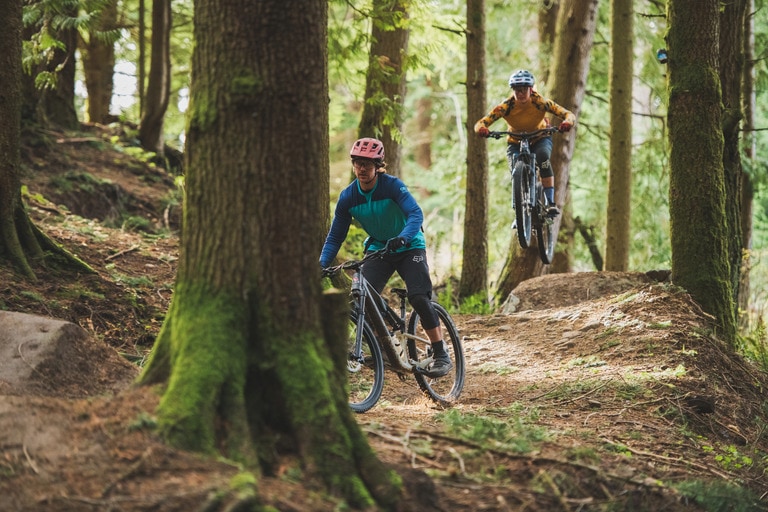
What is mountain biking? Mountain biking is essentially the trail version of two-wheeled adventures. Instead of cycling on asphalt as with road biking, you take to trail systems shared with hikers and trail runners or to parks built with tracks specifically for mountain biking. Mountain biking gear (including bikes, shorts and shoes) is different than road biking gear – since the softer but more variable terrain mixed with repetitive up-and-down movement requires different protection – so if you want to try it out, you’ll need to make sure you’re properly kitted up.
Hitting the trail provides a chance to explore. Though mountain biking doesn’t have to involve actual mountains, it does take you away from the pavement and likely into a more secluded and nature-rich environment. Listen to the sounds of the birds, look around at the trees, and revel in the peace of nature and the excitement that comes from adventuring outside.
Variable terrain can be physically and mentally demanding—in a good way. Mountain bike trails often feature a combination of smooth dirt, gravel, rocks, roots, leaves and other mixed surfaces. You may need to stand on your pedals to push up over a steep section or use your upper body strength to pull up on the handlebars and navigate around or over a large rock. You might even want to walk with your bike through more technical trail sections to prevent injury. “It’s a little bit more dynamic as an activity,” Henderson says of mountain biking. “You’re not just in that seated position. You’ll need to move your body a little bit more on the bike to maintain your balance over variable terrain and obstacles on the trail.”
As a result, both your body and your brain need to stay alert for whatever new surprise lies around the next corner, which can improve your ability to focus and stay mindful.
It can provide a sense of empowerment. “Mountain biking, in particular, is a powerful way for women to tap into their inner strength,” says Abel from Wild Rye. “The sport is demanding—it takes grit and determination—and exploring the outdoors on a mountain bike allows us to connect with nature and uncover our own limitless potential.”
Read more: Mountain Biking for Beginners, The Best Mountain Bikes
What is gravel biking? Some see gravel biking as a hybrid of road and mountain biking, though it's its own distinct activity that involves riding on unpaved backroads and fire roads—the most common surfaces for bikepacking. While the clothing and bikes more closely resemble road biking gear than mountain biking gear, gravel biking gear is built for more rugged and unpredictable terrain.
Gravel biking blends the benefits of trail and road riding. Riding on gravel may involve some technical sections, but you will likely also have long stretches where you can cruise at a good clip. Henderson adds that gravel biking is known as an especially community-oriented sport, with many events focused more on completing the ride rather than competing in it.
Read more: The Best Gravel Bikes | How to Choose a Gravel Bike | 3 Perfect Bikepacking Kits
E-biking Benefits
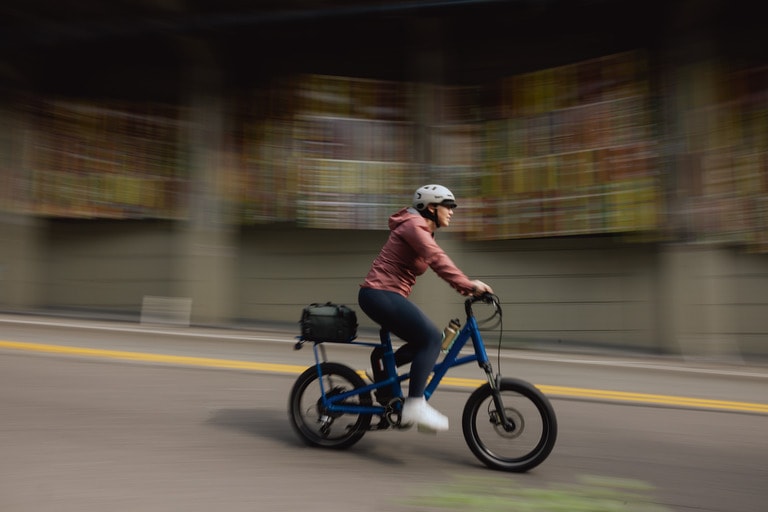
What is e-biking? When riding an e-bike, you’re still pedaling, but with electrical assistance. Because of this, you can tackle roads and mountains on an e-bike with more speed and greater ease.
Pedal-assist makes biking more accessible. E-bikes allow more people to cycle, including those who might not otherwise do so due to fitness or ability levels. The extra boost e-bikes deliver may also inspire people to ride farther and more frequently (for example, to get groceries or commute to work) than they otherwise would. Both researchers and everyday folks add that a touch of pedal-assist can boost the fun factor too, as seen in our articles Can You Get Exercise Riding an Electric Bike? and Gear I Hold Dear: My E-bike.
E-bikes expand the potential for community. “The e-bike opens up opportunities for people of different abilities to ride together at a similar level of effort,” Henderson says, noting that he often goes on outings with his wife where he rides a standard bike, and she rides an e-bike. “I’m getting the workout that I need, and she’s able to get just the right amount of workout as well.”
Read more: The Best Electric Bikes
Specific Benefits of Cycling Indoors
When the riding conditions outside are unsafe or uncomfortable, hop on a stationary bike and keep pedaling.
Stationary bikes deliver an efficient workout. When cycling inside, you’ll save time by not having to check weather conditions or dress perfectly. You won’t have to commute to the trail, making sure your bike is secure on a car rack, or deal with traffic and stop lights during your ride. You also won’t spend valuable minutes fixing a flat tire or broken chain. And, unless you build rests into your workout, there’s no coasting like outdoor riders get during downhill stretches. “Indoor training ensures that every pedal stroke counts,” says Kalkounis from Zwift. “This makes workouts more structured, controlled and effective, allowing you to hit specific training targets in a shorter amount of time.”
Indoor cycling workouts can be more precise and more varied. “You can control wattage, cadence and resistance with more accuracy, something that’s harder to maintain outdoors due to wind, terrain and traffic,” Kalkounis says. “This precision allows athletes to target specific physiological adaptations and track progress with more detail.” Plus, using a trainer allows a rider to simulate certain terrain—hills, for example—that they might not have outside their doorstep.
Focus on the ride without worrying about your safety. Without external risks, indoor riders can relax into their workout—and, if so desired, push themselves even harder than might be possible outside. “A lot of cyclists talk about hitting a ‘flow state’ indoors where you’re completely locked in, pushing yourself without overthinking,” Kalkounis says. “It almost feels meditative.”

